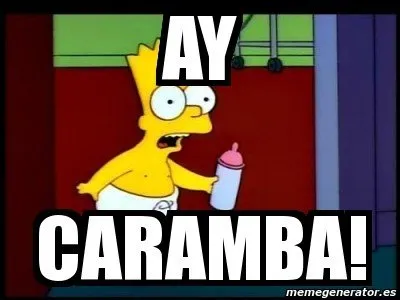
A few days back I was wondering why there are not many Spanish classes here on Stemit, and since I’m a native Spanish speaker why not helping foreigners who are trying to learn it as an extra language? So, I decided to start writing some articles to help all those who are learning Spanish and support them on their learning journey.
I didn’t know what I should talk about at first, after pondering about it for a while, I took the decision of explaining some of the main doubts that I see confuse most Spanish learners. I chose three confusing topics that my friends who are learning Spanish were very puzzled about. I think this may clear up some of your doubts and if you already know them It never hurts to brush up on the skills. I hope this can help and make your Spanish better! So, let’s go to the first common doubt.
The differences between: “Hay”, “Ahí” and “ay”
These three words might be very confusing (sometime even for native speakers) because they sound very similar. But once you get the hang of it, it will be pretty easy.
Hay= There is

This basically explains the existence of something, exactly like “There is” for example: “Hay un plato en la mesa” which means “there is a plate on the table”.
Ahí= There
This is an adverb, and means “there” by itself. So you can say for example “Ahí está la pelota” which means “the ball is there”.

Ay= Oh! / Ouch!
This is an exclamation and has several uses. People say “Ay!” either when they get suddenly impressed or when they get hurt.
For example:
“¡Ay, me asustaste!” meaning “Oh! You scared me”
“¡Ay, pisé un lego!” meaning “Ouch! I stepped on a Lego” (Which could be really painful)

“Saber” and “conocer”
This one is pretty easy. “Saber” means to have knowledge about something and “conocer” means to know someone or to express familiarity with a person.

Examples for “Saber”:
- Yo sé matemática= I know mathematics.
- Ellos saben cantar= They know how to sing.
Examples for “Conocer”:
- Yo la conozco= I know her.
- Ellos se conocen= They know each other.

“Chao” and “Adiós”
Despite you could use them interchangeably, maybe it would sound weird for Spanish speakers if you say “Adiós, nos vemos en una hora” because it literally means “Good bye, see you in one hour” and as you can see it doesn’t sound very natural, because you use “Adiós” when you are not going to see that person anymore or for a very long time. “Chao” is the most common farewell used in Spanish, but you can also use ¡Hasta luego! :)

Well, This is all for today, as this is my first Spanish class on Steemit, I chose the subjects, but from now on, I will make more articles clearing up your doubts. Let me your questions in the comments box and I will happily answer them in my next article.
Thanks for reading!
Special thanks to my friend @whynotdoit for encouraging me to make my first Spanish lesson :D
If you want to practice your conversational Spanish you can join our new channel on Discord and learn with us: https://discord.gg/2CwmqvP
Images:1,2,3,,4,5.
